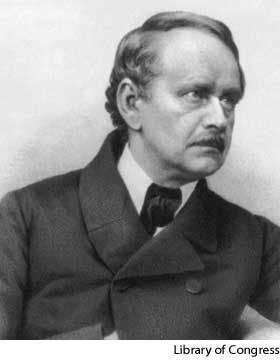SPIRITUALITY SCIENCE AND THE CELL THEORY

SPIRITUALITY SCIENCE – THE CELL THEORY OF SPIRITUALITY
In Biology, cell is the basic or fundamental unit of structure, function, and organization in all living things or it is the building block of life. Let me begin with my respectful tribute to some of the people who contributed to ‘The Cell Theory’, one of the foundations of Biological Sciences. Cells were first observed in the 17th century shortly after the discovery of the microscope. Robert Hooke, british curator of instruments at The Royal Society of London, during 1665 coined the word cell. Dutch microscopist Antonie Van Leeuwenhoek(1632-1723) made over 247 microscopes and examined microorganisms and tissue samples. He gave the first complete descriptions of bacteria, protozoa( which he called animalcules ), spermatozoa, and striped muscle. He also studied capillary circulation and observed Red Blood Cells.


Improvements in microscopy during early 19th century permitted closer observation and the significance of cells had received better understanding. Matthias Jakob Schleiden(1838), german botanist, Theodor Schwann(1839), german physiologist, and Rudolf Virchow(1855), german pathologist, and others made important contributions to The Cell Theory that describes cell as the building block of all Life.




The Cell is the smallest unit in the living organism that is capable of carrying on the essential life processes of sustaining metabolism for producing energy and reproducing. Many simple, small, single-celled organisms like Protozoa perform all life functions. In higher, complex, bigger, multicellular organisms, groups of cells are structurally and functionally differentiated into specialized tissues and organ systems. Thus, The Cell Theory includes the following foundational principles of the Biological Sciences:
1. All living things are made up of cells. Cell is the most elementary or basic unit of Life.
2. Cell is a fundamental unit of structure, function, and organization in all living things including plants and animals.
3. Cells only rise from division of previously existing cells.
4. All cells are similar in composition, form, and function. All cells are basically the same in chemical composition( in spite of variations ) in organisms of similar species. For example, all the solid tissues in the human body can be shown to consist largely of similar cells; differing it is true, but that are essentially similar to an Ovum.
5. The cells exhibit functional autonomy. The activity of an organism depends on the total activity of ‘INDEPENDENT’ cells.
6. Energy flow( metabolism and biochemistry ) occurs within cells.
7. Cells contain hereditary, biological information(DNA) which is passed from cell to cell during cell division.
THE CELL THEORY OF SPIRITUALITY
The basic or fundamental unit of life in the human organism is derived from the fertilized egg cell that eventually develops into a complete organism. The most significant feature of similarity between the cells of the human body is the presence of a soft, gelatinous, semi-fluid, granular material inside the cell. This substance known as Protoplasm or Cytoplasm, or Cytosol is similar to the ground substance found in the Ovum or the Egg Cell. This viscous, translucent, colloidal substance is enclosed in a membrane called Plasma Membrane or Biological Membrane. A small spherical body called nucleus is embedded in the Protoplasm of the cell. The two essential features of any living cell in the human body are that of the presence of Protoplasm and the nucleus.

THE SPIRITUALITY OF SUBSTANCE, FUNCTION, ORGANIZATION, ACTION, AND INTERACTIONS
To establish the biological existence of the human organism, I add the concept of Spiritualism and Spirituality to The Theory of Cell. The Single Fertilized Egg Cell has ground substance that is of Spiritual nature and the Spiritualism and Spirituality consists of the following functional, and organizational characteristics:
1. The Cell is Conscious of its own existence and knows its internal condition and knows it external environment.
2. The Cell is Intelligent and it has the Cognitive abilities like perception and memory to acquire information, to retain information, to recall information, and to use information in the performance of its complex tasks in a sequential manner.
3. The Cell has the ability to show characteristics such as mutual cooperation, mutual tolerance, and display functional subordination and subservience while being independent.
4. The Cell grows, divides, and develops into a complete organism while it acquires substances and energy from an external environment and it continuously transforms matter to build matter of its own kind for its own benefit to sustain its existence with its own identity, individuality while the Organism represents a social group or a biological community. The Spiritual nature of the substance brings this functional harmony and unity by bringing together its Essence and Existence.
The theoretical claims about Spirit and Soul, the religious and philosophical doctrines of Spiritualism and Spirituality must be verified using The Cell Theory that defines the human organism. To describe Soul or Spirit as nonmaterial Self will not help man to know the real or true man.
Dr. R. Rudra Narasimham, B.Sc., M.B.B.S.,
Kurnool Medical College, Kurnool, Andhra Pradesh, India,
M.B.B.S. Class of April, 1970.
Related articles
- Spiritualism – the Biological Basis of Spirituality (bhavanajagat.com)
- Spiritualism – the New Synthesis (bhavanajagat.com)
- Spiritualism – the Cognitive Science of Spirituality (bhavanajagat.com)
- Spiritualism – the Positive Science of Spirituality (bhavanajagat.com)
